Taxidermy: The Artistry of Preserving Bodies
Thanks to reality television shows like “Oddities” on the Science Channel, “Immortalized” on AMC, and “American Stuffers” on Animal Planet, there has been a resurgence in the popularity of taxidermy. The first instance of a dead organism being preserved and stuffed for display or learning purposes is not known with certainty, but in our book of the week, we’ll learn several theories on the origins of taxidermy—and most interestingly, how to perform it. Montagu Browne discusses all aspects of taxidermy, and its origins, in his 1896 work, Artistic and Scientific Taxidermy and Modelling: A Manual of Instruction in the Methods of Preserving and Reproducing the Correct Form of All Natural Objects, Including a Chapter on the Modelling of Foliage:
“Little is known of the beginnings of the practice of the ‘stuffing’ or ‘setting-up’ of animals for ornament or for scientific purposes; and it is highly probable, from what we gather from old works of travel or natural history, that the art is not more than some three hundred years old. It was practiced in England towards the end of the seventeeth century, as is proved by the Sloane collection, which in 1725 formed the nucleus of the collection of natural history now lodged in the galleries at South Kensington.
…the oldest museum specimen in existence is a rhinoceros still preserved in the Royal Museum of Vertebrates in Florence. This was for a long time a feature of the Medicean Museum in Florence, and was originaly mounted for the museum of Ulysses Aldrovandus in Bologna. It dates from the sixteenth century.” (3
Browne says that the first taxidermy performed upon birds took place when, in the early sixteenth century, Holanders began commercial trade with the East Indies. He says:
“A nobleman brought back to Amsterdam a large collection of live tropical birds and placed them in an aviary, which was heated to the proper temperature by a furnace. It happened that the attendant one night before retiring carelessly left the door of the furnace open, thereby allowing the smoke to escape, which suffocated the birds. The nobleman beholding the destruction of his large collection, which was the pride of the city, began to devise means for the preservation of the dead birds. To this end the best chemists of Amsterdam were called in for consultation, and it was decided to skin the birds and fill their skins with the spices of the Indies for their preservation. This was done, and they were then wired and mounted to represent life.” (3)
While taxidermy results in the creation of beautiful, preserved biological specimens, there is the gruesome aspect of needing to capture and kill these organisms prior to preservation (if they have not died naturally). Browne dedicates many pages to the various means of killing different organisms, both vertebrate and invertebrate, so that their bodies remain intact and suitable for taxidermy. These methods are not pretty, from soaking invertebrates in different mixtures of sea water, alcohol, acids and nicotine, to using cyanide of potassium and chloroform on vertebrates (60), or setting traps for them or hunting them (95).
The business of flaying an animal and preserving its skin can be complex depending on the animal’s size, and Browne quotes M. Dufresne’s account of skinning and preserving an elephant that had died at the menagerie of the Jardin des Plantes in Paris in 1803:
“The corpse of the elephant having been extended upon the ground, facilitated our taking and writing all its dimensions. . .M. Desmoulins drew the animal on one of the sides of the wall according to all these measurements, in the workshop where the model was to be constructed in its natural size. This done, we proceeded to the skinning of the elephant, which we were only able to place upon its back by means of four-corded pulleys, fastened to the platform. In this position we made an incision in the form of a double cross: the middle line went from the mouth to the anus, the two others were directed from each left foot to the opposite right foot; the tail and trunk were opened underneath longitudinally. We scooped out the soles of the feet within an inch of their edge, that the nails might remain in the skin: to effect this, we were obliged to employ the chisel and mallet. This operation was very difficult.
After four days’ labour of several persons, we separated the skin from the body: it then weighed 576 lbs; we extended it on the ground to take away the cutaneous muscles which adhered to its interior, particularly to the head” (117).
Dufresne goes on to describe putting the skins in tubs of chemicals and boiling water, and then placing the skins over a life-size model of an elephant made of hollow wooden pieces (118). After many days of work, the entire process was completed, and the elephant skin was rubbed with turpentine and olive oil to restore its original color after it had been made “a very ugly grey colour” from the chemicals in which it had soaked (119).
Taxidermist’s tools. A taxidermist’s tools may seem nightmarish, but each served a valuable purpose, such as Tool No. 1, a skinning knife, and Tool No. 7, the “the eye and brain scoop or extractor—a tool which may save the beginner some trouble in preventing the bursting of a bird’s eyeballs” (20).
Despite the less pleasant aspects involved in taxidermy, it does require practitioners with real artistic talent capable of accurately sculpting a model of whichever vertebrate animal has been skinned (invertebrates require other methods of preservation). Browne describes the process of taking plaster casts of the animal, useful for modeling small details like the palatal ridges inside the mouth of a tiger (123). Casts of skinned animals also allow the taxidermist to create accurate under-molds upon which to arrange the flayed and preserved skin; the taxidermist will press torn pieces of paper covered in glue into the hollow, two-piece mold in layers, in order to create the under-form. Browne describes this process:
“A half-bucketful of flour-paste was made, and some thin but tough waste-paper, used by manufacturers in the hosiery trade, was procured. This was torn into pieces of various sizes, and taking one—pasted on one side only—sufficient for the purpose, a commencement was made at one end by laying the unpasted side downwards, and working it into the inequalities of the mould by gentle but even pressure with the fingers, the edge of the paper coming over the edge of the mould being pasted down on the flat in order to get a secure attachment. Piece by piece the whole of the inside was covered” (132).
After the two halves of the plaster mold were filled with glued paper, the mold hardened, and the halves were fastened together. The animal’s skin was draped over the mold and parts like the feet were filled with clay, the tail with a rod (137), and visible muscles of the jaw with colored wax (138). Parts of the skin (such as the exterior of padded feet) were waxed to appear natural, and artificial eyes “made of half-ovals of thin glass painted to nature from the inside” were “inserted in the orbits after the eyelids have been filled, and the cornea, etc., then made up in wax” (139).
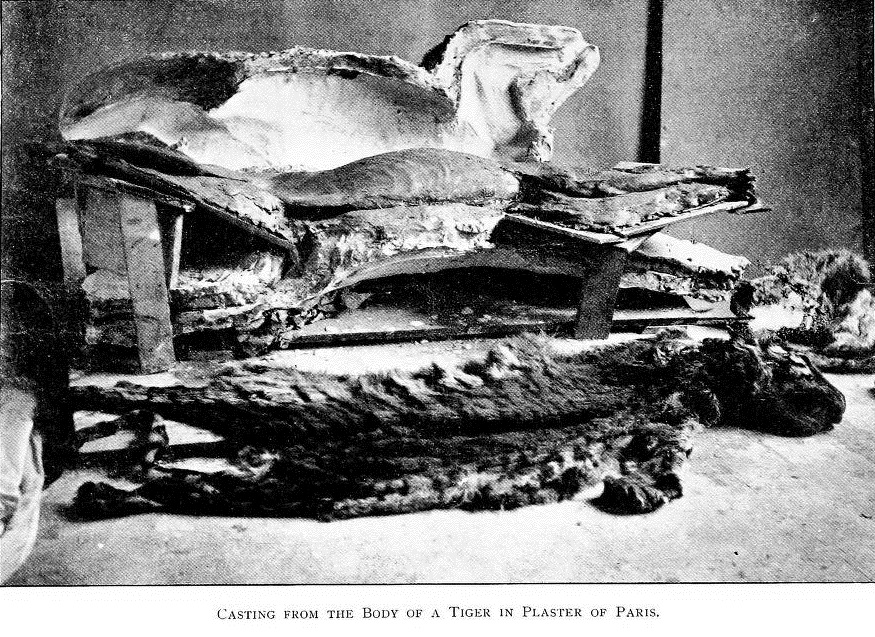
Casting the skinned body of a tiger.
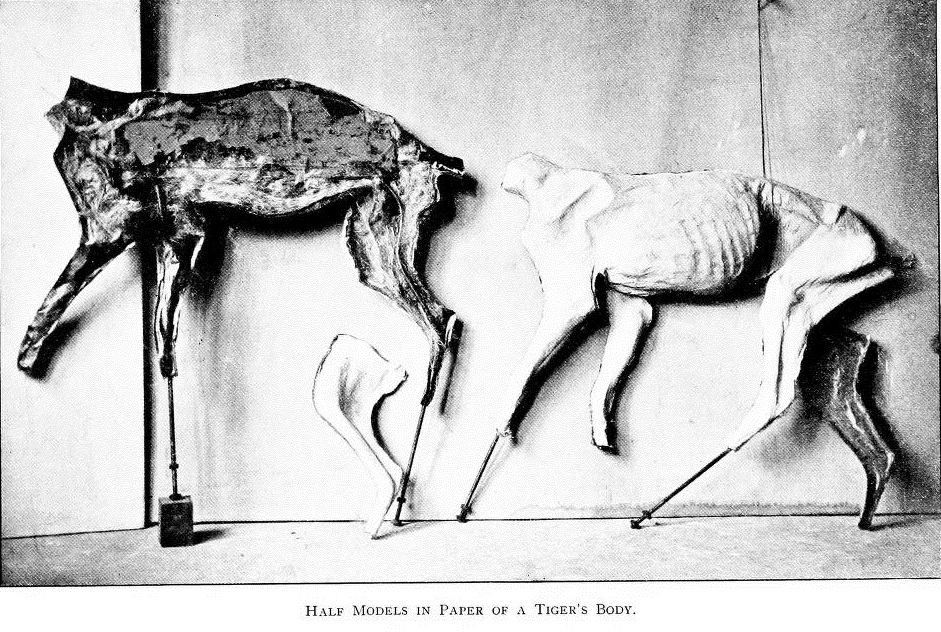
Paper under-mold of a tiger, in two halves.

Taxidermy of tigers fighting over an elephant, done in the manner described by Browne above.
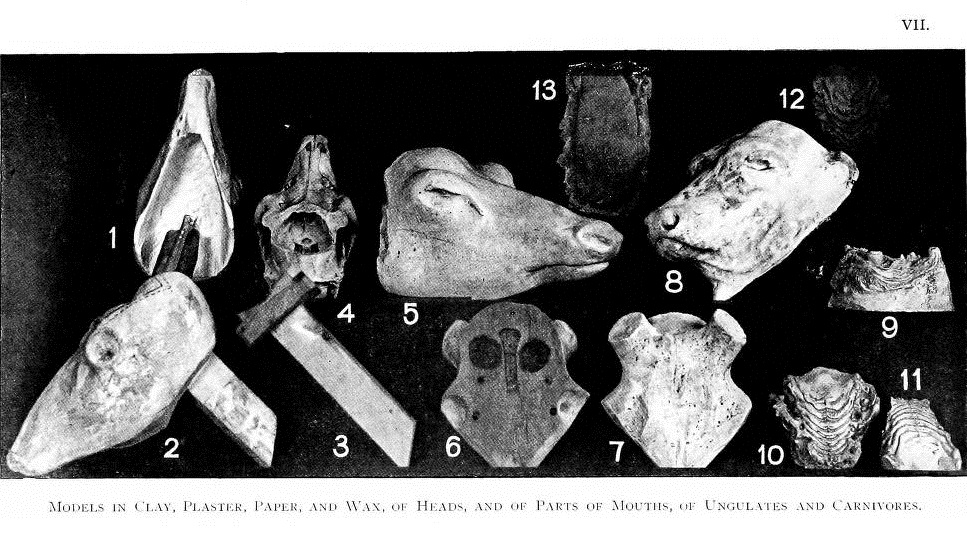
Models of animal heads, made in various different media, used to wrap the animals’ skins around.
While their methods may seem gruesome to some, taxidermists have created lasting models that represent not only lifelike specimens, but also teaching specimens that carefully show the physiological structure of different animals. In the illustration below, a pigeon has been preserved to show the relation of its bones to its skin.

Taxidermy of a pigeon showing the relation of its bones to skin.
Also part of the taxidermist’s artistry is his or her ability to display the specimens in settings that look like their natural habitat, and to do so in an aesthetically pleasing manner. Browne treats this subject, and the photographs below are examples of beautifully arranged preserved specimens.
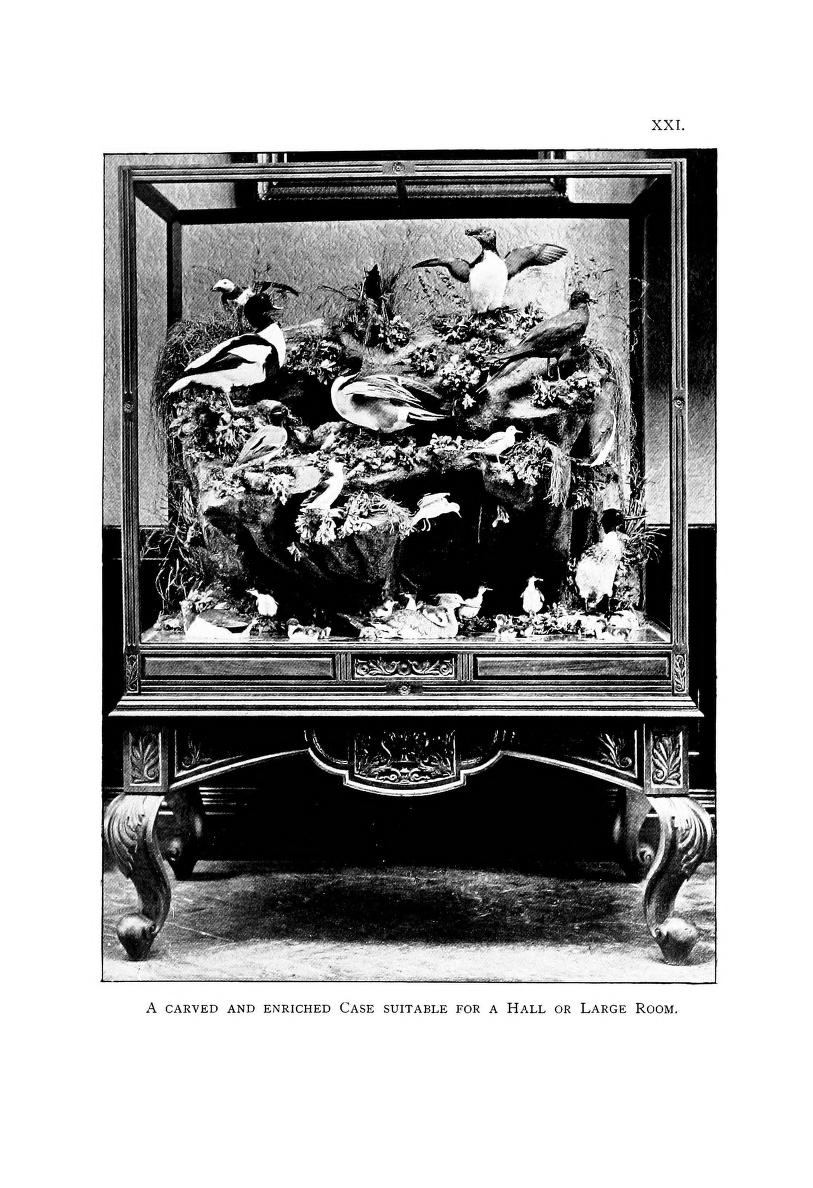
Taxidermy of a group of penguins.
Whatever your opinions of taxidermy, it has been crucial to building the collections of many museums we know and love, and to helping our understanding of many different animal species.



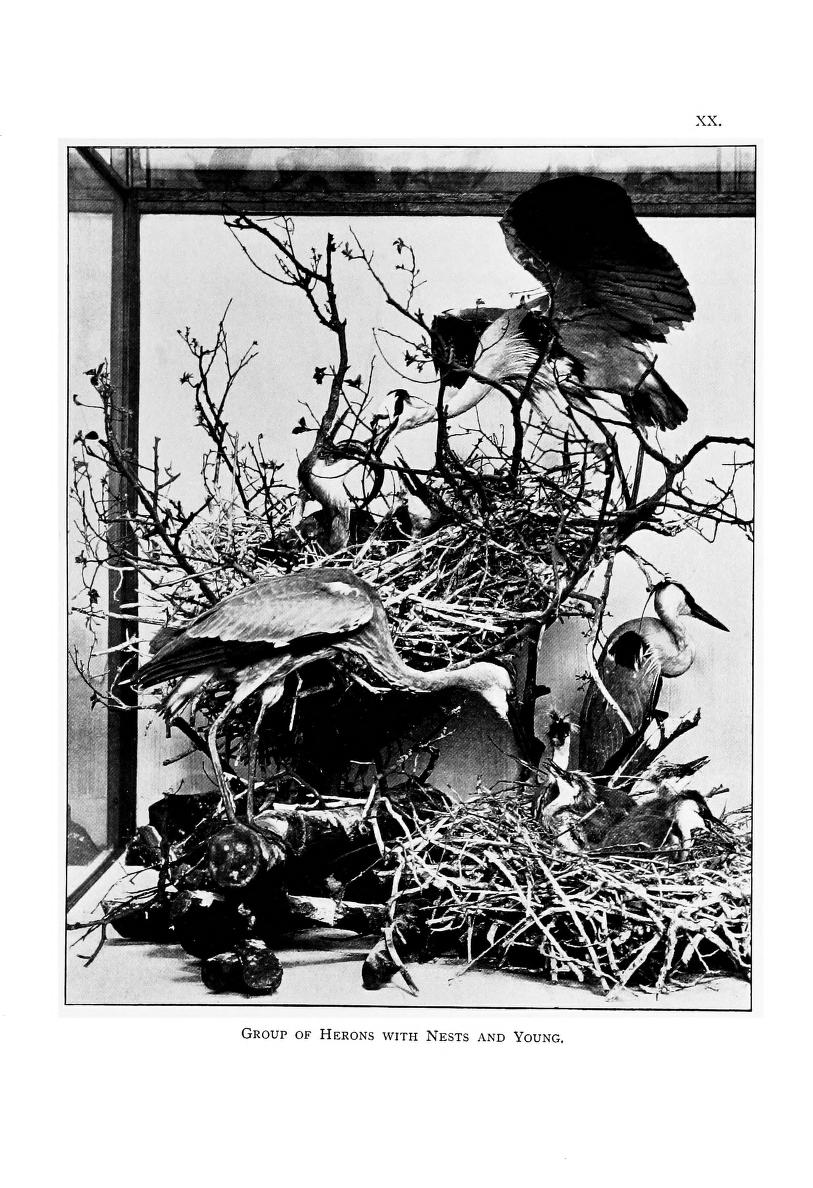



Leave a Comment